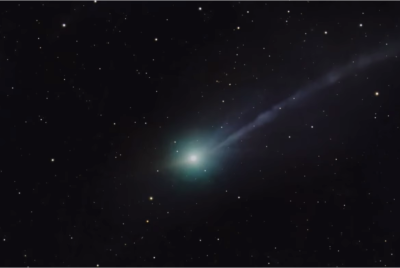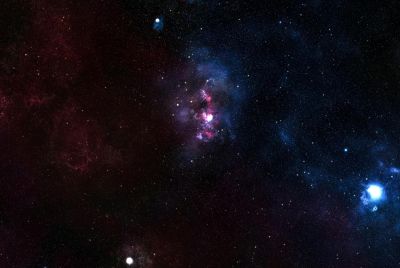3i/ Atlas Interstellar Object Has No Technosignatures: It's Officially A Comet - NASA
Interstellar comet 3I/ATLAS shows no signs of alien technology

A mysterious visitor from beyond our solar system has reignited debate over the possibility of alien life. First spotted in July 2025, the interstellar comet 3I/ATLAS drew global attention not just for its rare trajectory, but for the swirl of speculation it triggered—ranging from scientific curiosity to theories of extraterrestrial probes. On 19 November 2025, after months of silence due to a US government shutdown, NASA has released new images and data that put the rumours to rest.
Discovery and the Shutdown Shadow: A Cosmic Tease Unfolds
Astronomers first glimpsed 3I/ATLAS on 1 July 2025, through Chile's ATLAS telescope in Río Hurtado, its hyperbolic path screaming interstellar origins—only the third after 'Oumuamua in 2017 and Borisov in 2019. Earlier glimpses from NASA's TESS satellite traced activity back to 7 May 2025, at 6.4 AU from the Sun, hinting at volatile ices beyond water sublimating early.
The Vera C. Rubin Observatory serendipitously captured it from 21 June 2025, nearly stealing ATLAS's thunder. But the 43-day US government shutdown from 1 October stalled responses, letting rumours riot: was this a probe in comet's clothing? Speeding at 250,000 km/h, it zipped past Mars on 3 October 2025, at 29 million km, observed by ESA's Mars Express and ExoMars Trace Gas Orbiter.
NASA's Psyche spacecraft trailed it for over eight hours on 8-9 September 2025, from 33 million miles away, stacking images of its 130,000 mph dash. Silence during the shutdown amplified Avi Loeb's July paper musing a 30-40% chance of artificiality, igniting a wave of '3I/ATLAS alien probe' mania.
Quirks in the Ice: Unusual Traits Fuel, But Don't Ignite, Alien Fires
Hubble's 20 August 2025 observations pegged 3I/ATLAS's nucleus at 1,444 feet to 3.5 miles wide, active with a coma of carbon dioxide, water, carbon monoxide, and carbonyl sulphide—revealed by JWST's 6 August NIRSpec scan, announced 25 August.
Gemini South and NASA's Infrared Telescope Facility spotted water ice on 5 and 14 July 2025, but early dust activity at 6.5 AU baffled models, suggesting exotic volatiles. No outbursts marred its steady brightening—steep at r^-3.9, then flattening—nor did it fragment like Borisov, despite perihelion on 29-30 October 2025 at 1.4 AU inside Mars' orbit.
University of Oxford's Chris Lintott dismissed spacecraft notions: 'The idea that 3I/ATLAS could be an alien spacecraft is simply nonsense. There's nothing about it that suggests such a thing, and you might as well argue that the moon is made of cheese.'
NASA's Image Blitz: Technosignatures Absent, Science Supreme
On 19 November 2025, NASA unleashed a visual blitz: the PUNCH mission stacked views from four satellites, 231-235 million miles out, blurring Mars past the comet; STEREO captured September speed shots; and multi-spacecraft mosaics forged a 3D vista.
Over a dozen platforms, including Hubble, JWST, and Mars orbiters, probed the comet. No threats emerged. Its closest approach to Earth will be 170 million miles on 19 December 2025. Associate Administrator Nicola Fox affirmed: 'We certainly haven't seen any techno signatures or anything from it that would lead us to believe it was anything other than a comet.'
Amit Kshatriya echoed: 'It looks and behaves like a comet,' while nodding to Perseverance's September microbial hints on Mars, underscoring genuine hunts for life. DW's 20 November coverage hailed it a 'friendly solar system visitor,' predating our 4.5-billion-year-old system, possibly 7 billion if from the Milky Way's thick disk.
NASA's verified @NASA account posted on 19 November 2025: 'LIVE: See the latest images of comet 3I/ATLAS, the third object we've ever seen passing through our solar system from elsewhere in the galaxy. We're sharing what we know about this visiting comet, how we're studying it, and what we can learn from it.
LIVE: See the latest images of comet 3I/ATLAS, the third object we've ever seen passing through our solar system from elsewhere in the galaxy.
— NASA (@NASA) November 19, 2025
We’re sharing what we know about this visiting comet, how we’re studying it, and what we can learn from it. https://t.co/3nAF1HmQ3S
This deluge not only quells 3I/ATLAS conspiracy chatter but galvanises global gazes. With Juno poised for post-perihelion peeks, the saga affirms scientific vigilance over viral voids.
© Copyright IBTimes 2025. All rights reserved.




















